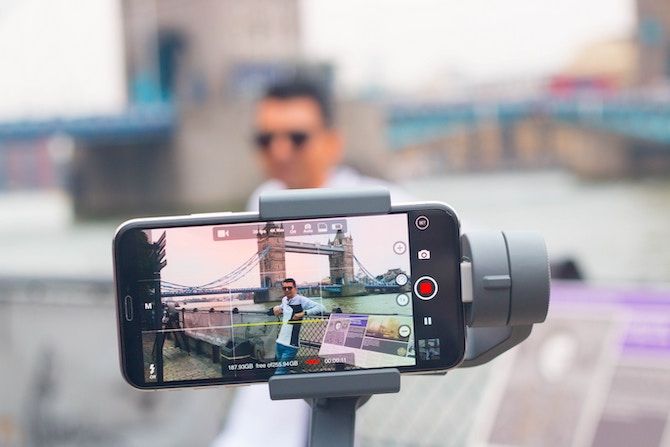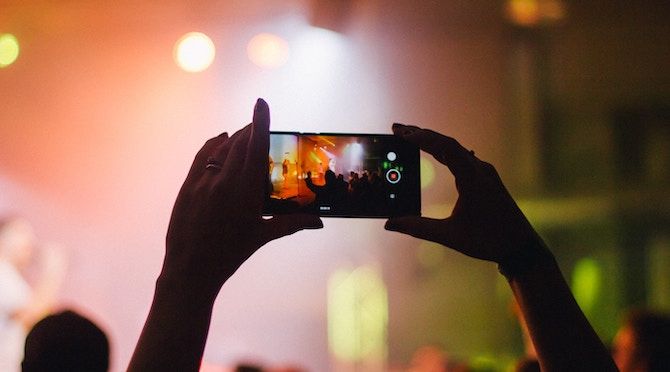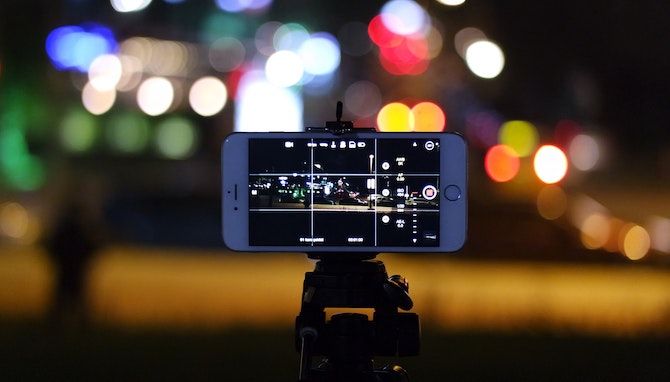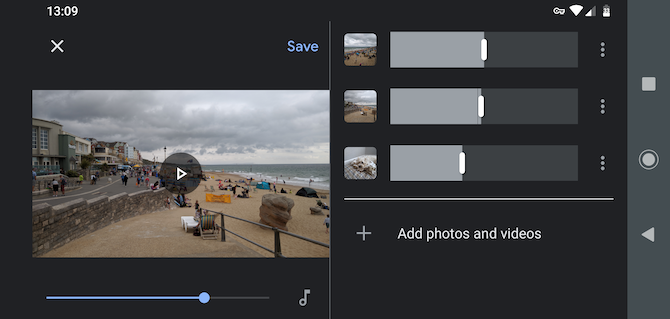If you shoot a lot of videos but are rarely happy with the results, you aren't alone. Most people would love to know how to make better videos.
Fortunately, it's not that difficult. Whether you're recording something to publish online or simply to capture memories to keep and share, these simple tips will help you make better videos.
Read on to discover how to make your home videos look more professional.
1. Always Use the Back Camera
This may seem like an obvious rule, but it's easy to forget. The rear camera on a phone is better quality, has a higher resolution, and offers more features within the app. It will almost always give you better results.
Do you need some tips for recording yourself? Okay, in many cases we'd still recommend using the rear camera, with your phone propped up on a desk or wall. If you prefer the handheld approach then you can use the front camera, but feel free to rotate the phone so you shoot in landscape mode.
If you're speaking directly into camera make sure you look into the lens, not at the screen. Otherwise your video will make it seem like you're looking over your viewer's shoulder.
2. Stability and Focus
There are two big requirements for making a great video: holding the camera still, and keeping it in focus.
Many phones, cameras, and camcorders have built-in image stabilization. This helps keep your video steady, but you need to know its limitations. IS works better when you're holding the camera still to begin with---shooting while walking can easily result in unwanted camera shake.
If you want to shoot smoothly while moving, see our guide to the best iPhone gimbals to find your ideal device.
Without IS, hold your device with both hands when recording video. Use a tripod or makeshift alternative to keep your camera still---even a bag of rice can serve as a great DIY stabilization device.
3. Record in Landscape Mode
The simple first step to learning how to make professional videos is to remember to shoot in landscape mode---turn your phone on its side.
Vertical, or portrait, videos are fine if you're only ever going to look at them on your phone. The moment you try to watch it on a TV, laptop, tablet, or almost any other device its ill-fitting orientation will jump out as a surefire sign of amateur hour.
And besides, you can fit more into the frame in landscape mode. This means less need to constantly pan left and right, which in turn leads to a classier looking finished product.
4. Add a Grid
The only thing worse than watching a video recorded in portrait mode is watching a video taken at a wonky angle. Adding a grid lets you use your background as a point of reference to ensure that your recording is always straight.
Most devices have this option, available via a setting you may need to enable within your camera app.
The grid helps you align your video against a line in the background to ensure you're recording straight videos.
It aids composition, too. If you're recording people, position their eyes in level with the top grid line.
Photo enthusiasts will know this as the Rule of Thirds, which helps you frame items within your shot better. You can read more about this in our guide to the essential photography tips for beginners.
5. Lighting
While it's easy enough to lighten dark or underexposed photos, dark or underexposed videos bring a number of bigger problems:
- It's hard to brighten video without degrading the quality and introducing noise.
- The camera finds it harder to focus in low light. It might even continually drift in and out of focus.
- If you're using Auto mode, as you're likely to be when making a homemade video, the camera will reduce the frame rate when filming in poor light. This results in jerky video that you won't be able to fix.
What's the solution? As a general rule, try to make sure that your subject is illuminated by a bright source of light that's ideally behind you. Use your smartphone's flashlight only as an absolute last resort.
If you want to shoot regularly in low light you might need to upgrade your gear so you can use fast lenses and full manual controls.
6. Experiment With Angles
It's natural to just hold up the camera and start shooting. Yet if you want to make professional videos at home you need to experiment more with the angles you use.
Instead of shooting everything at eye level from one spot, try taking a wide shot then moving closer to your subject to shoot a close-up. Then edit the two shots together. Or hold the camera over your head to capture the action from above. Or crouch down and shoot upwards.
Have some fun trying to find what works. You don't need to make every shot completely different, but a bit of variety can work wonders.
7. Zoom With Your Feet
When you want to get a close up view of something, it's tempting to reach for your camera's zoom button. But this can come with problems. Most smartphones only offer digital zoom, which can degrade the quality of your image. Plus, the further you zoom the more likely your video is to become jerky, even if you're using image stabilization.
So what do you do if you want to get closer to your subject? Zoom with your feet. Stop filming, move closer to the subject, and start shooting once more. Simple!
8. Use Effects (But Don't Overuse Them)
Video effects are the equivalent of photo filters. They look great when they're used properly, but you can easily overdo it. Still, most cameras and smartphones offer a few options that can add some pizzazz to your videos.
Timelapse
iPhones have a great timelapse feature built into the default Camera app, but apps like Lapse It let you emulate this effect on Android. Try using it at a time where you can use all (or most) of the above rules.
Timelapses work brilliantly if you can steadily position your camera for a prolonged time over an area that's constantly changing---for example, on the top of a bridge to capture a sunset or star trails.
Slow Motion
Slow motion can add drama to a video, or expose detail that's normally lost in fast moving action. Keep it short, though. Video normally plays back at 30 frames per second, so a clip shot at 120fps will last four times longer than the real world speed.
Cinemagraph
Cinemagraphs are a like a cross between a video and a photo---most of the image is still, apart from one or two choice parts that are moving.
A lot of smartphone camera apps offer this feature, or you can download an app like Cinemagraph Pro on iOS or VIMAGE on Android to try it out for yourself. The effect can be very impressive.
9. Learn Basic Video Editing
Serious video editing is beyond the scope of this article, but a little basic editing can help make your videos look more professional.
We have guides to the best free video editing apps for Windows, the best video editors for Android, and the best iOS apps to edit videos. Apart from letting you remove unwanted parts from your video clips, these tools let you merge multiple clips and photos, add a soundtrack, video filters, and create mini-movies worth sharing.
Just trimming the start and end of a clip will often improve it massively, as will splitting a longer clip into several shorter ones and trimming the fat from those. This is especially true for something you want to share online.
Even better is to use multiple shots rather than capturing everything in one go. Keep them to around five to 10 seconds each, and stitch a few together in an editing app when you're done.
10. Cheat With the Editing
Not everyone has the patience and skill to carefully edit multiple clips into a montage. Thankfully there are free apps that do this for you. Apps like Google Photos and GoPro’s Quik (available for Android and iOS) are superb.
All you need to do is select the media files you want, select one of the free background tracks, and add a theme. Both apps then stitch your videos together to create a montage, saving you valuable time and making you look like a pro in the process.
How to Make Better Videos
It isn't hard to make professional looking videos at home. None of these tips require any great technical ability, and with a little practice you'll be shooting awesome videos in no time at all.
So where do you go next? Well, first, remember that sound is an equally important part of the process, so check out these tips to help you record better audio.
Then take a look at the most popular types of YouTube videos to help get your creative juices flowing.





